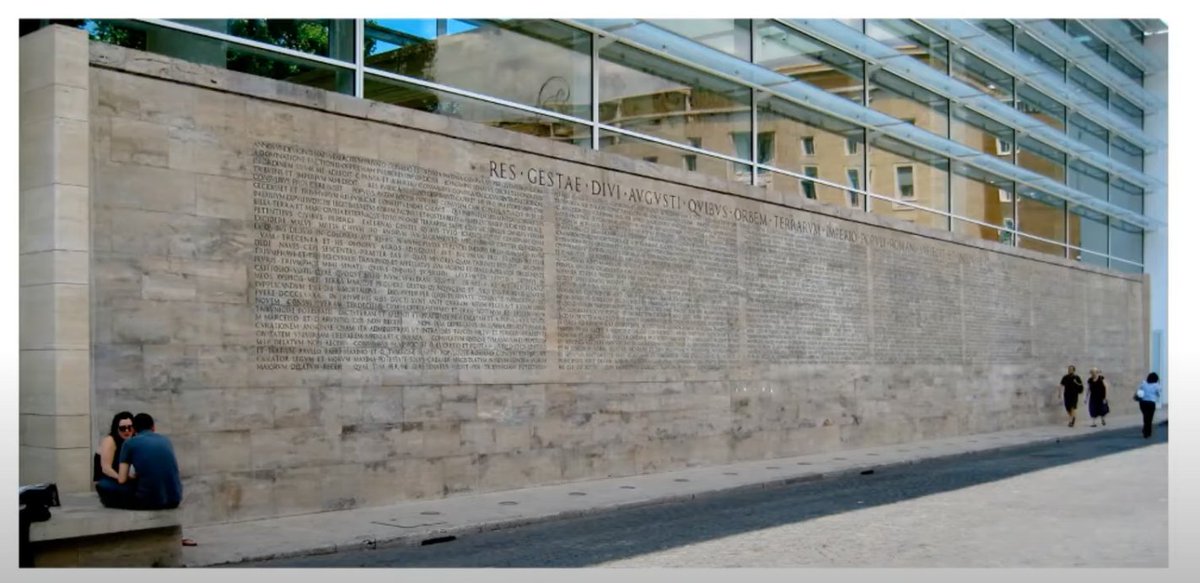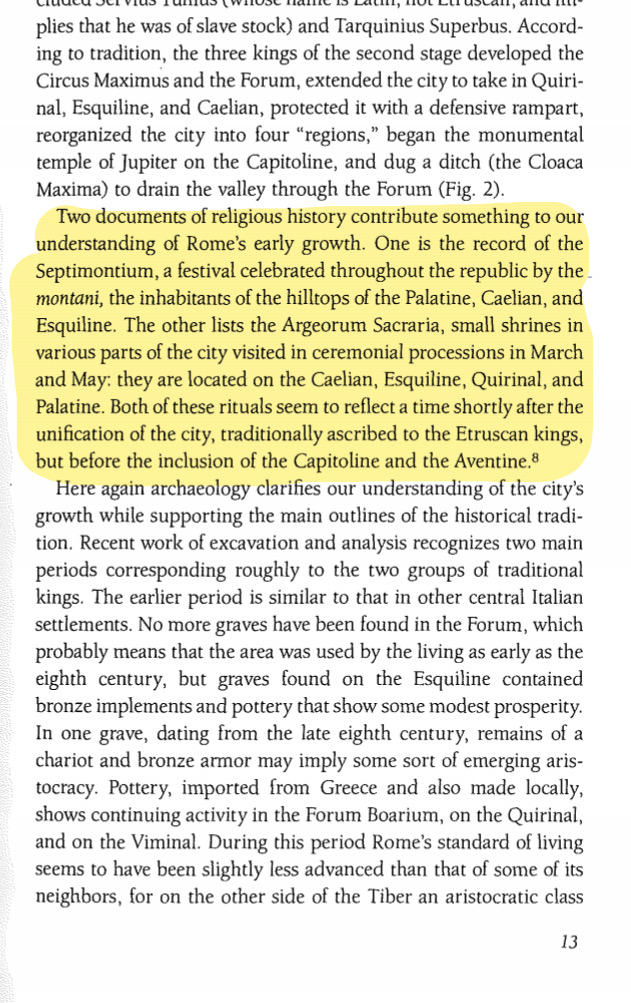Hey #CLST6 ! There are many different methods that we can use to understand the four-dimensional puzzle that is ancient Rome. These methods include archaeology, architecture such as temples, maps, and modern topography, but in this #RR12 I am going to focus on texts. /1 https://twitter.com/FlintCLST6/status/1318201198005129225">https://twitter.com/FlintCLST...
Unlike the Etruscans who wrote scripts that are difficult to decipher (1), it is relatively easy to translate Romans texts. The Romans wrote many texts about the city. They include Augustus& #39; Res Gestae (image below) as well as other literary sources or epigraphs (2). /2
Other texts that are important in understanding Rome are the record of the Septimontium and the list of the Argeorum Sacaria. These texts respectively recall a festival celebrated and a list of small shrines in certain areas of the city (3). /3
Altogether these texts as well as many others are crucial in understanding Rome through another lens. By piecing together the information from these texts with other evidence, we can begin to put together the four-dimensional puzzle of Ancient Rome.
Citations:
(1) Kleiner, A History of Roman Art. Chapter 1. Page 7.
(2) https://www.youtube.com/watch?v=MXWnp8bjV-w&feature=youtu.be
(3)Stambaugh,">https://www.youtube.com/watch... The Ancient Roman City. Page 13. https://www.youtube.com/watch...
(1) Kleiner, A History of Roman Art. Chapter 1. Page 7.
(2) https://www.youtube.com/watch?v=MXWnp8bjV-w&feature=youtu.be
(3)Stambaugh,">https://www.youtube.com/watch... The Ancient Roman City. Page 13. https://www.youtube.com/watch...

 Read on Twitter
Read on Twitter



